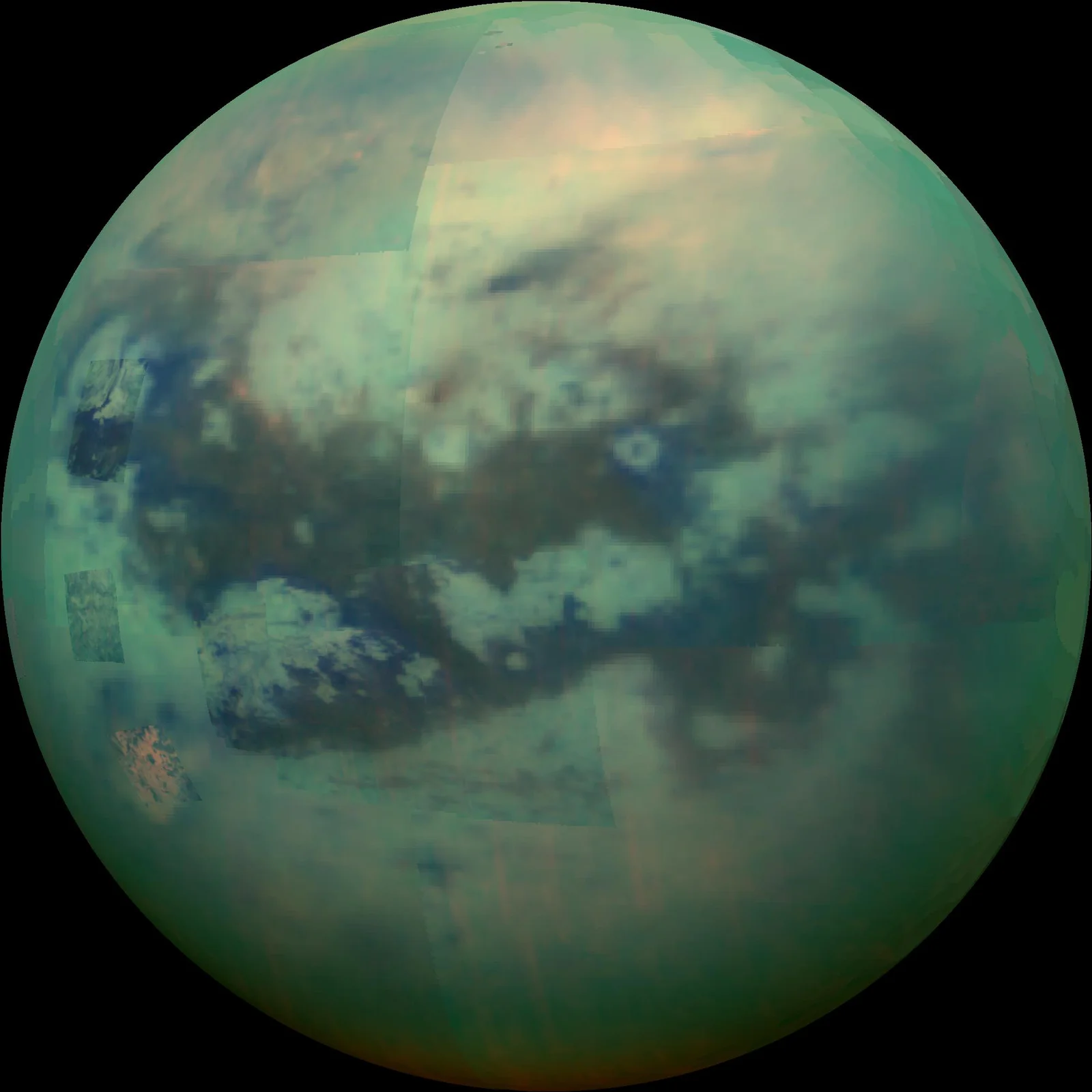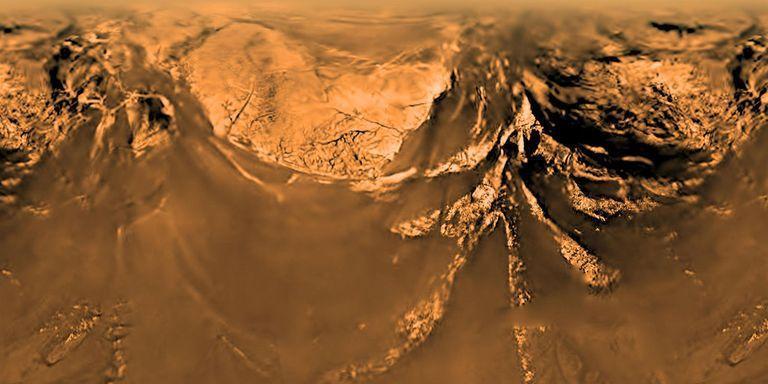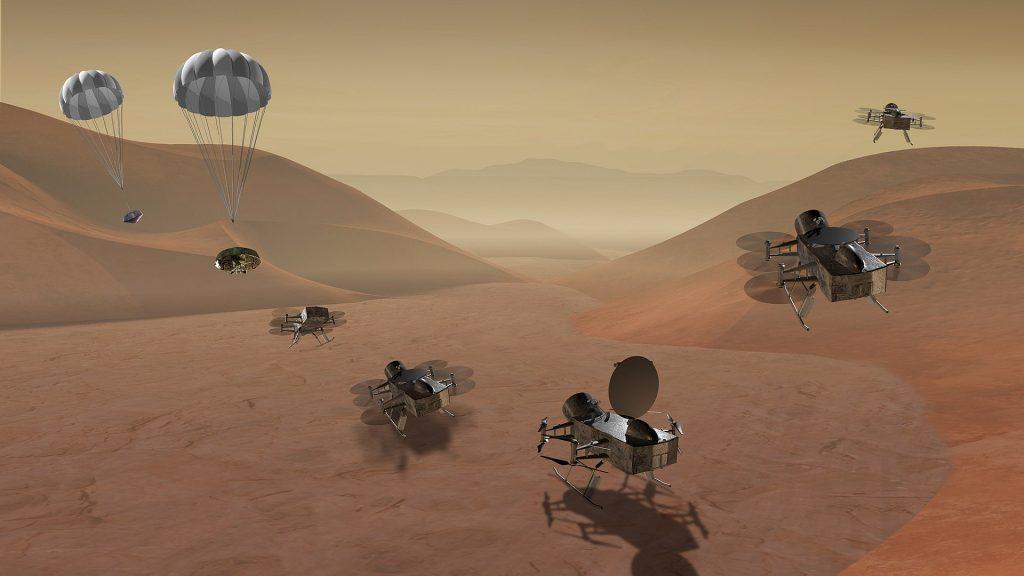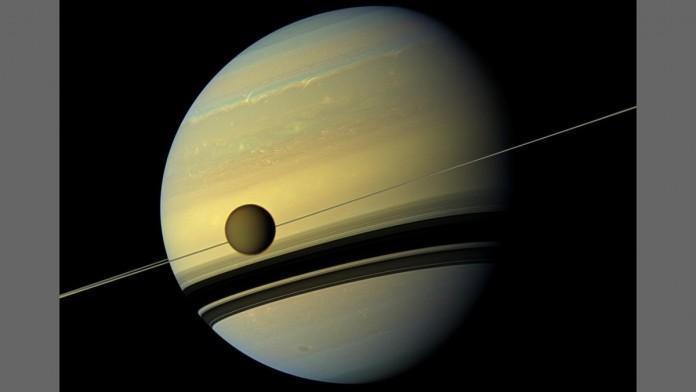If you ask yourself, “what’s the most pressing issue in the world of astronomy and astrophysics”, something I know all of you do, you’ll most likely come to two obvious solutions: “Where did the universe come from?” and “Is there life elsewhere in the universe?” While we currently have no knowledge of extraterrestrial species wielding lightsabers and manipulating inanimate objects through their blood-borne disease, we do have an understanding of locations in our solar system that could harbor microbial life. In this month’s The Cosmic Mariner, we’re traveling to the strange and downright mysterious world known as Titan.
Unlike Europa, Jupiter’s 2nd Galilean moon, and perhaps the most promising place in the solar system for extraterrestrial life to exist, Titan is often snubbed from Hollywood films due to its lack of space appeal. After all, Saturn’s 6th moon is quite bland with nothing more than a golden-brown haze covering the entirety of the planet. Like many worlds, Titan is an incredibly inhospitable place. Want to go for a hike on the dunes? Make sure you take a coat as it’s a bit chilly at negative 300 degrees Fahrenheit. It’s not the kind of place you’d want to spend your summer vacation…or your winter vacation…or actually, I don’t really recommend going there at all unless you breathe nitrogen and methane. Oh, and if you don’t enjoy the ear-crushing pressure of a swim at 49ft beneath the water’s surface, then I wouldn’t visit Titan since the air pressure is roughly the same.

Coincidentally, however, this pressure allows nitrogen and methane to split apart through their interactions with ultraviolet radiation in Saturn’s magnetic field. These molecular puzzle pieces then recombine to form organic hydrocarbons that rain onto the surface of Titan where they form the darkened dunes and lengthy riverbeds. Wait, riverbeds? One of the most important pieces of Titan’s habitability equation is the presence of liquid rivers and lakes littered across the surface. In fact, Titan is the only object in the solar system known to contain liquids on the surface. These liquid bodies, however, are not as swim-friendly as Earth’s. On Titan, these are composed of liquid methane and ethane. As far as we know, carbon-based life forms, every living thing we know of, requires the existence of liquid water to survive and carry out metabolic interactions. However, the idea that life on the surface of Titan would require liquid water is an earth bias. If we are to discover new life forms, perhaps we must look outside the cell wall and eliminate our earthly concepts. In 2005, Chris McKay and astrobiologists at the Ames Research Center published a paper that described how methanogens, or methane-based life forms, could survive. Essentially, the paper postulates that these methanogens could subside through the consumption of hydrogen, acetylene, and ethane, all while releasing the waste product methane. While Chris McKay holds reservations about the possibility of these methanogens existing, even though there is data backing the potential existence of these organisms through the observation of depleted numbers of hydrogen and acetylene on the surface of Titan, this concept is not completely out of this world.
While these organisms would be vastly different from our current understanding of life, they would present the potential existence of life on another world and effectively open Pandora’s box to an array of planetary bodies capable of hosting life throughout the cosmos. While Titan’s methane lakes and river systems remain a primary target for life unseen by humans, this mysterious moon does, in fact, possess water. That’s right, our favorite molecule, dihydrogen monoxide. Say that next time you order a glass and watch your waiter’s reaction. Unlike Earth, rocks on Titan are composed of frozen water. Take a look at the above photograph captured by the Huygens probe that landed on the surface in 2005. See those rocks? They are water! In addition, measurements taken by Cassini and Huygens seemed to confirm the existence of a subsurface ocean of liquid water. This means that Titan, like Europa and Enceladus, are potentially habitable worlds right within our solar system! And guess what. We are going there!

As is the mission of NASA, the United States is going to land a nuclear-powered quadcopter on the surface of Titan and fly it from destination to destination to better and more efficiently study this mysterious golden world. Launching in 2026 and arriving in 2034, the Dragonfly mission will “look for prebiotic chemical processes, common on both Titan and Earth. Dragonfly marks the first time NASA will fly a multi-rotor vehicle for science on another body. According to NASA, the spacecraft will have a 2.7-year baseline and research a variety of important environments such as riverbeds, dunes, and the presumed subsurface ocean. While the Dragonfly mission is still a decade away from its first flight on the golden world, we can only imagine what incredible insight this important mission will provide. While the rest of the world focuses on Europa (and the Coronavirus) due to its potential to harbor Earth-like organisms, why not focus our attention on the golden gem; Titan. A moon bigger than our innermost planet Mercury and, if life happens to be discovered on it, could rewrite how we view not only ourselves but also how we look for life and intelligence in the greater extent of the cosmos.







